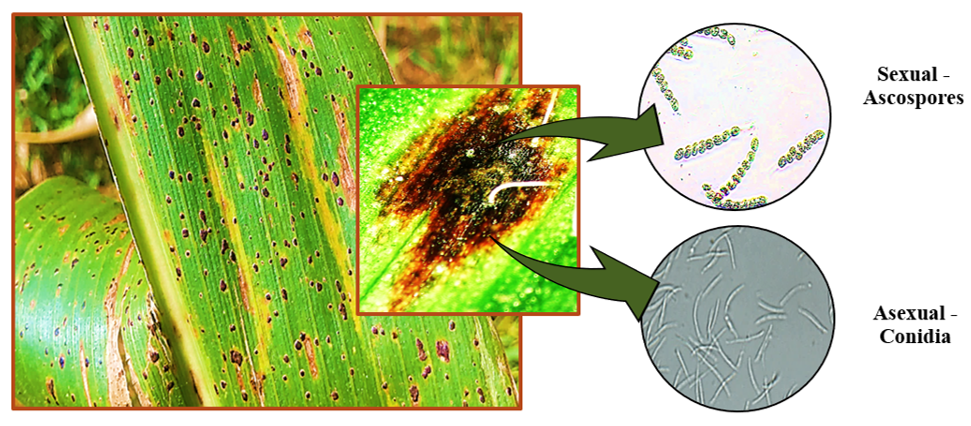Phyllachora maydis, population structure and basis of emergence and spread in U.S. Corn production
Phyllachora maydis, a fungal obligate pathogen is the causal agent of tar spot of corn. Tar spot of corn; a foliar disease reduces corn stover, stalk, silage, grain yield, and quality.

Tar spot of corn caused by fungal pathogen Phyllachora maydis. Signs of black raised spots embedded in the leaf tissues. Photo credits: Tiffanna J. Ross, Purdue University.
P. maydis is endemic to Latin America where it was first documented in Mexico in 1904. P. maydis has been restricted there for hundreds of years, but in 2015 was for the first time identified in the United States in Illinois and Indiana.
To date, P. maydis has spread to nine U.S states; IL, IN, IO, MI, MN, MO, WI, and FL resulting in yield losses up to 4.5 Million t. Environmental model predictions are that P. maydis can spread throughout U.S. Corn Belt causing severe economic damages, estimating $231 Bil revenue per every 1% yield loss.

Map of the geographical distribution of corn tar spot pathogen P. maydis (a), Environmental model prediction of P. maydis spread in the U.S. (b) Map showing the current spread of P. maydis in the U.S. (c). Photo credits: (a & c) Tiffanna Ross, Purdue University, (b) Mottaleb, et al. 2019.
Information on the population genetics, emergence and spread of P. maydis in the U.S., remain largely unknown. Our lab is, therefore, working towards answering these questions:
- Why is this pathogen only now surfaced in U.S. corn production?
- How did it got here; was it introduced or was it here in the U.S. all along but dormant?
- What's driving the spread?
- How fast and wide is the spread?
- What's the structure and diversity of the pathogen population?
- What the mode of reproduction and potential for evolution?
Answers to these questions will require studying the biology, ecology, epidemiology, and genetics of this pathogen all of which our lab has initiated.
